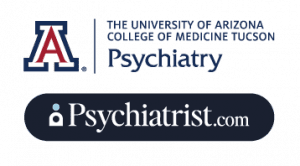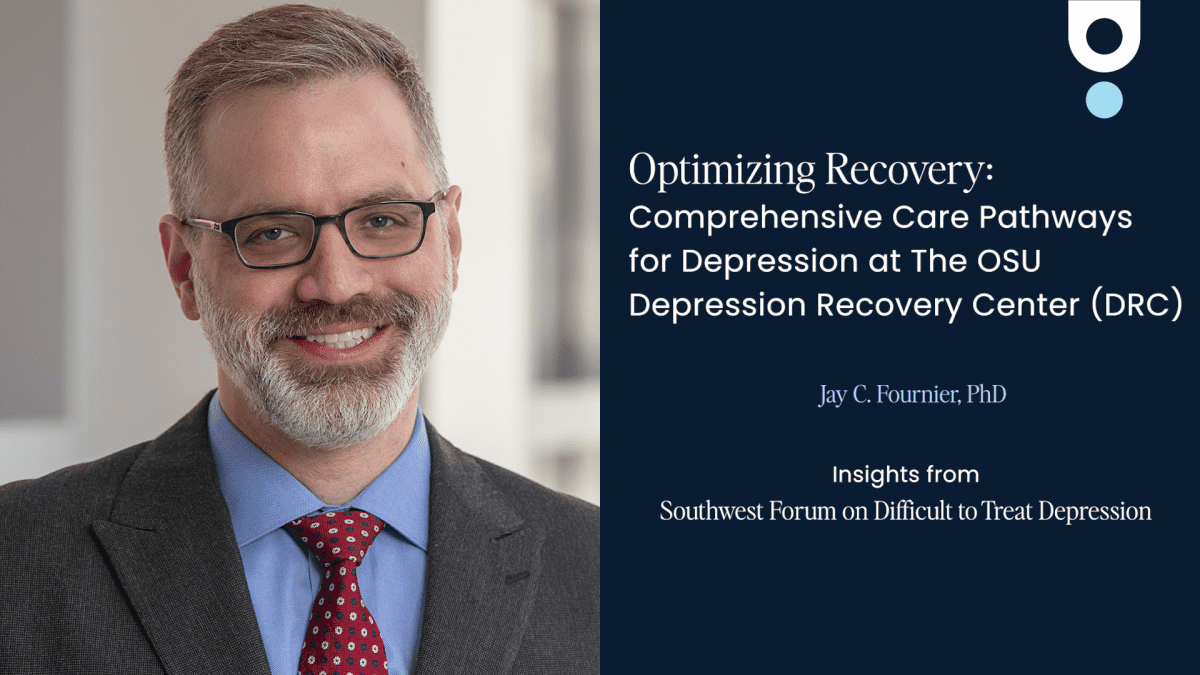Samantha Meltzer-Brody, MD, MPH is the Assad Meymandi Distinguished Professor and Chair of the Department of Psychiatry at the University of North Carolina at Chapel Hill. She’s also the director of the UNC Center for Women’s Mood Disorders. Meltzer-Brody oversees one of the nation’s largest public university psychiatry departments. She also collaborates with UNC Health and the state of North Carolina on diverse mental health initiatives.
In this presentation, Meltzer-Brody recounts how new treatments such as brexanolone and zuranolone have changed the game for new mothers struggling with postpartum depression. She also addresses cost concerns, overcoming problems with access, and what issues to consider when discussing these novel treatments with patients.
Samantha Meltzer-Brody, MD, MPH
Director, UNC Center for Women’s Mood Disorders
University of North Carolina at Chapel Hill
Chapel Hill, NC
| This presentation was part of the “Southwest Forum on Difficult to Treat Depression: Focus on Approach, Algorithms, and Access” in July at the Arizona Biltmore in Phoenix. Psychiatrist.com worked with the University of Arizona College of Medicine – Tucson Department of Psychiatry.
To learn more and watch more videos, visit our Difficult to Treat Depression Clinical Resource Center. |
 |
|---|
Transcript
[00:12 – 01:31] Introduction and Overview of Neurosteroids in Postpartum Depression
Today I’m talking about novel neurosteroids in the treatment of postpartum depression and specifically talking about brexanolone, which is a proprietary formulation of allopregnanolone, which is the neuroactive metabolite of progesterone, and also talking about zuranolone, also a novel neurosteroid similar to brexanolone. The difference between brexanolone and zuranolone is brexanolone is an IV drug and zuranolone is an oral drug. There has been a great need for new, effective, and rapidly acting therapies for postpartum depression.
We know that postpartum depression is one of the most common complications of childbirth impacting up to one in eight people who give birth, and the postpartum period is a critical time for maternal-infant bonding and attachment. Without adequate treatment, untreated postpartum depression can have lasting negative effects for a mom and offspring when untreated or poorly treated, and therefore there is clearly an unmet need for improved treatment options. That includes effective and rapidly acting medications that have the potential to reduce morbidity and mortality and increase positive interactions with mom and baby that allow for better long-term developmental outcomes.
[01:32 – 02:52] Mechanism of Action: Brexanolone and Clinical Trial Results
Brexanolone is a proprietary formulation of allopregnanolone, and allopregnanolone is the neuroactive metabolite of progesterone. It has been hypothesized that brexanolone could increase GABA-A functioning because it’s a positive allosteric modulator of the GABA-A receptors. It acts on both of the extrasynaptic and the intrasynaptic subunits, and the therapeutic rationale in studies is that GABAergic hypofunction potentially could be associated with postpartum depression, and that treating with allo, or in this case a proprietary formulation of allo called brexanolone, could have therapeutic potential in postpartum depression by potentially increasing GABAergic functioning. In clinical trials with brexanolone that we conducted at the University of North Carolina at Chapel Hill and then sites across the country, brexanolone, which is developed by Sage Therapeutics, was found to have very positive and rapidly acting antidepressant effect in women with postpartum depression. You saw rapid onset of action. This slide shows that you have onset of action that starts within 12 hours and differentiates between active drug and placebo as measured by the Hamilton Depression Score, which was the primary outcome measure.
[02:53 – 04:11] Zuranolone: Oral Neurosteroid and Comparison with Brexanolone
Brexanolone is a 60-hour IV infusion. It was the first drug approved for postpartum depression in 2019 and was studied for a 60-hour infusion and then followed out to 30 days. Zuranolone is an oral drug. It was recently approved for postpartum depression in August of last year, 2023. It is also a neurosteroid. It is similar to brexanolone, but has had the addition of a ring and has a different plasma concentration over time.
So it also is a neurosteroid. It is very similar to brexanolone, but it is not brexanolone. However, it is delivered orally, which is enormously more convenient for patients.
When we look at the studies of zuranolone that were conducted, you also see fast onset of action, but beginning at day three, you see differences between active drug and placebo. It is a two-week oral drug administered once per day, and in the clinical trials, patients were followed out to 45 days. Again, both zuranolone and brexanolone have rapid onset of action, which is a differentiator, and impressive efficacy being greater than placebo and having a different mechanism of action.
[04:12 – 05:43] Comparison of Zuranolone with SSRIs and Rapid Onset of Action
Both of them are positive allosteric modulators of GABA. We recently looked at a paper to compare the efficacy estimates of zuranolone versus the SSRIs for postpartum depression. The SSRIs have been longstanding important treatment modalities for postpartum depression, although certainly not developed specifically for postpartum depression.
They have been used in an off-label way and have been found to be effective in studies. One of the things we were curious about was if you compared indirectly efficacy estimates between zuranolone, a new oral drug, versus SSRIs, what would that look like? I want to share an excerpt from this paper in the Journal of Medical Economics. And here you see differences between the Skylark study of zuranolone comparing other studies that have looked at SSRI treatments in postpartum depression comparing to the Hamilton depression score.
And what you see here is the rapid onset of action again and the efficacy estimates. So you see the Hamilton depression score on the axis and the days in time on the other axis, and you see that the drop in Hamilton depression score rapidly within the first day, which speaks to the clinical trial data. Certainly by day three, you see rapid onset of action for zuranolone, the oral drug, that has faster onset and you see robust response over time during the 45 days of follow-up of zuranolone as compared to the SSRI treatments.
[05:44 – 07:03] Challenges: Access, Cost, and Efficacy of Neurosteroid Therapies
And so this is an important, I think, comparator to look at as you’re considering what drug is the right drug for a patient to use. Obviously many other factors go into it, including availability, certainly cost, access obviously is really important. But one of the things that has been most interesting to me about this novel mechanism of action is the rapid onset of action as well as the efficacy.
To conclude, neurosteroid therapeutics can offer great promise in the treatment of postpartum depression. The rapid antidepressant effects of both brexanolone, the IV drug, and zuranolone, the oral drug, support the development of neuroactive steroids that are positive allosteric modulators of GABA and fast-acting antidepressants. These two drugs are approved, FDA approved, for postpartum depression.
[07:04 – 09:23] Conclusion: Broader Implications and Future of Neurosteroids in Depression Treatment
The role of this type of drug in major depressive disorder is still more broadly under investigation. And brexanolone is an example of using underlying hypotheses of pathophysiology to develop a novel treatment, again looking at the changing levels of neurosteroids at the time of childbirth. And the aspirational hope is that this can lead to improved outcomes for our patients by taking a precision psychiatry or precision medicine approach.
So these are innovative new drugs, and like any drug, when it hits the market, there should be healthy skepticism about going from clinical trial data to widespread general population use. Also, with any new pharmacologic agent, they generally cost significantly more. And one of the things every psychiatrist who’s thinking about prescribing for postpartum depression will weigh is that I can use a generic selective serotonin reuptake inhibitor, which has been used for years, and I can get for $5 at the local Walmart for my patient, or my patient can obtain it, versus a new drug that’s going to be significantly more costly and that we have less data about.
And I think that the risk-benefit ratio always has to be weighed carefully for any individual patient. In the case of these drugs, the rapid onset of action, as well as the efficacy, is going to be, I think, a major advantage, assuming someone can have access to the drug and it’s covered by insurance. So I cannot understate, or overstate, actually, I cannot overstate how important it is for access and for patients to have access to drugs that are costly, because otherwise they’re not going to be able to use them.
But I think that the main point that I see is that, as psychiatrists and other doctors involved in taking care of postpartum women, including OBs, family medicine doctors, etc., that having a drug that works within a few days, and if it is highly effective, is going to be a game-changer, and if you’re someone suffering with this and it’s causing all the morbidity associated, you want something that acts quickly. And so I think that how we wrestle with access, whether patients can get it, and we evaluate over time the effectiveness, how it performs in real-world settings compared to clinical trials, will ultimately determine practice patterns. This can be applied to clinical practice because both these drugs are FDA-approved, and I think that seranilone as an oral drug is obviously much more convenient, but anyone who’s interested in trying it for a patient they’re treating with postpartum depression, it is FDA-approved, and there are certainly patients who are eager to try this.
And so I think that, again, every doctor has to weigh the access issues, the cost issues, how they ensure their patient can get the drug, and, you know, over time I think our colleagues determine what they feel comfortable with and what they see in the best interest of patients.



